 Last additions - Takashima 高島市 Last additions - Takashima 高島市 |
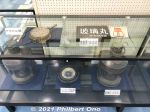
Jan 12, 2022
|
|
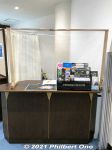
The museum is staffed by volunteers unlike the old museum which was staffed by employees from the local tourist office.Also see my blog post about the museum: https://shiga-ken.com/blog/2022/01/lake-biwa-rowing-song-museum/Jan 12, 2022
|
|

Unlike the old museum, the relocated museum does not have a gift shop. However, it does sell these stationary.Jan 12, 2022
|
|

Showcase dedicated to the works of the late song researcher Iida Tadayoshi who spent many years researching the song from the 1970s. His books and booklets about the song greatly contributed to the understanding of the song, how it was created, and the people behind it.Jan 12, 2022
|
|
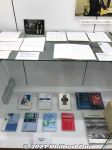
Iida donated his notebooks and cassette tapes of many interviews related to the song. Some of it is displayed here.On the lower shelf are books about the song by Iida and others.Jan 12, 2022
|
|

A few old parts from a lake cruise boat. Compass, lamp, and other things.Jan 12, 2022
|
|
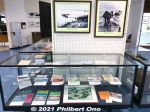
Display of Biwako Shuko no Uta calendars featuring the kirie works of ??.Jan 12, 2022
|
|

Old records of the song covered by many famous Japanese singers.Jan 12, 2022
|
|
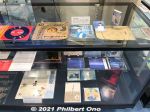
Old records of the song.Jan 12, 2022
|
|
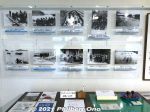
Photos of the Kanazawa college rowers who died due to strong winds that capsized their boat in 1941.Jan 12, 2022
|
|
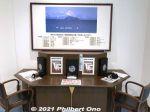
CD listening station where you can listen to numerous cover versions of the song by famous artists.Jan 12, 2022
|
|
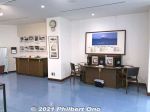
Jan 12, 2022
|
|
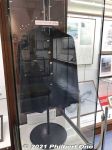
Uniform of the Dai-sanko college where Oguchi Taro studied.Jan 12, 2022
|
|
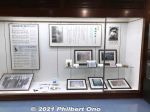
Exhibit for Yoshida Chiaki, credited for composing the original melody.Jan 12, 2022
|
|
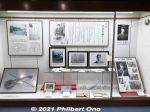
Exhibit for Oguchi Taro who composed the song.Jan 12, 2022
|
|

Song lyrics for all six verses.Jan 12, 2022
|
|
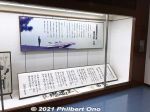
About the song lyrics.Jan 12, 2022
|
|
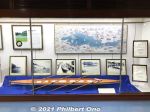
The accurate scale model of a fixed-seat boat is also displayed.Jan 12, 2022
|
|
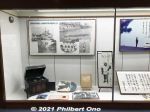
Photos of Imazu in 1917.Jan 12, 2022
|
|
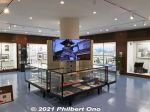
It seems all or almost all the exhibits in the old museum have been moved to this new space.Jan 12, 2022
|
|
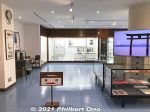
The museum has only one room in a square layout with glass cases and exhibits. The middle has a small showcase as well.Jan 12, 2022
|
|

The new museum occupies a large corner of the building's first floor. It's on the left when you enter the building.Jan 12, 2022
|
|
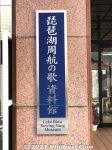
The museum sign includes English! Official English name is "Lake Biwa Rowing Song Museum."Jan 12, 2022
|
|

The Imazu-Higashi Community Center (今津東コミュニティセンター) is across from the Imazu Shimin Kaikan concert hall. Jan 12, 2022
|
|

The new Biwako Shuko no Uta Shiryokan (Lake Biwa Rowing Song) song museum is now in this building since April 1, 2020. This is the Imazu-Higashi Community Center (今津東コミュニティセンター).Jan 12, 2022
|
|

If you are walking from Omi-Imazu Station on the main road, turn left.Jan 12, 2022
|
|

If you are walking from Omi-Imazu Station, you can see this large sign on the side of the old song museum showing the way to the relocated song museum.Jan 12, 2022
|
|
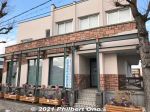
The main road also has this old Biwako Shuko no Uta Shiryokan (Lake Biwa Rowing Song) song museum which has closed. It moved to another building nearby.Jan 12, 2022
|
|
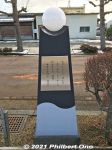
On the main road between Imazu Port and Omi-Imazu Station are sidewalk lights engraved with song lyrics. This has Verse 3 which mentions Imazu.Jan 12, 2022
|
|
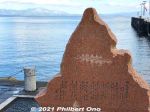
Oguchi Taro was a member of the rowing club at Dai-san High School (now Kyoto University). He composed it in Imazu, Shiga Prefecture during the second night of the trip.Jan 12, 2022
|
|
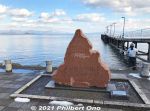
Biwako Shuko no Uta song monument at Imazu Port. In June 1917, a song called Biwako Shuko no Uta (Lake Biwa Rowing Song) was composed by college student Taro Oguchi during a boat rowing trip around Lake Biwa.Jan 12, 2022
|
|
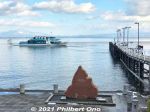
Imazu Port also has this song monument for Biwako Shuko no Uta (Lake Biwa Rowing Song). 琵琶湖周航の歌 歌碑The song is about college boys from Kyoto rowing around Lake Biwa while mentioning famous places like Otsu (the starting point), Omi-Maiko (Omatsu), Imazu, Chikubushima, Nagahama, and Chomeiji.Jan 12, 2022
|
|

The new Imazu Port, opened in March 2020. Completely rebuilt.Jan 12, 2022
|
|
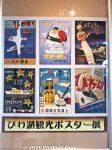
Old tourist PR posters for Lake Biwa. Great design. They don't make them like that anymore.Jan 12, 2022
|
|
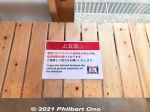
Social distancing on benches, but bad English. よい子のみなさん、この英語はダメですよ。無視してください。Jan 12, 2022
|
|
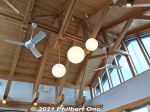
Ceiling.Jan 12, 2022
|
|

Boat ticket office operated by Biwako Kisen.Jan 12, 2022
|
|
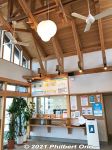
Boat ticket office.Jan 12, 2022
|
|
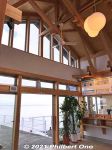
Imazu Port building is made of wood from Shiga.Jan 12, 2022
|
|
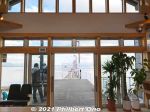
Imazu Port's gate to the boat dock.Jan 12, 2022
|
|
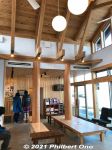
Waiting room inside Imazu Port building.Jan 12, 2022
|
|

Rear view of Imazu Port building. Rebuilt and opened on March 22, 2020.Jan 12, 2022
|
|
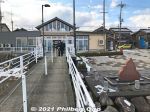
Heading to the new Imazu Port building. On the right is the Biwako Shuko no Uta (Lake Biwa Rowing Song) song monument.Jan 12, 2022
|
|
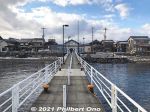
Imazu Port dock to the port building.Jan 12, 2022
|
|
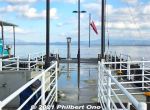
At the end of Imazu Port's dock, the lantern is a song monument for Verse 3 of Biwako Shuko no Uta (Lake Biwa Rowing Song).Jan 12, 2022
|
|
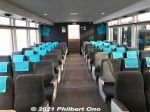
Inside Interlaken. The boat also has an outside deck.Jan 12, 2022
|
|

Inside Interlaken. Jan 12, 2022
|
|
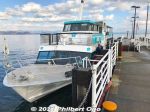
"Interlaken" cruise boat at Imazu Port.Jan 12, 2022
|
|
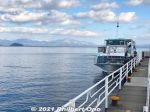
"Interlaken" cruise boat at Imazu Port with Chikubushima and Mt. Ibuki in the background.Jan 12, 2022
|
|
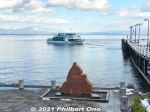
You can also get to Imazu by boat from Chikubushima island. Imazu Port has boats going to/from Chikubushima. On the eastern shore, Nagahama and Hikone have boats going to Chikubushima.At Imazu Port, boat named "Interlaken" operated by Biwako Kisen cruises to/from Chikubushima.Jan 12, 2022
|
|
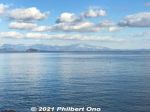
From Imazu Port, Chikubushima island and Mt. Ibuki can be seen across the lake.Jan 12, 2022
|
|

Near Imazu Port.Jan 12, 2022
|
|
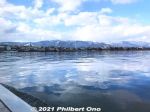
This is Imazu as the boat approaches Imazu Port. Small, quiet town anchoring the northwestern part of the lake. Tourist base for exploring this part of Shiga and the lake.Jan 12, 2022
|
|
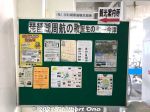
"Birthplace of Biwako Shuko no Uta" (Lake Bwa Rowing Song) on a bulletin board in the train station.Jan 12, 2022
|
|

You can therefore traverse northern Lake Biwa between Nagahama/Hikone and Imazu via Chikubushima. Approaching Imazu by boat.Jan 12, 2022
|
|

Leaving Kaizu-Osaki. May 29, 2017
|
|

Kaizu-Osaki cherry blossoms as seen from sakura cruise boat.May 29, 2017
|
|

Boats also leave from Nagahama and Hikone for Kaizu-Osaki.May 29, 2017
|
|

Really enjoyed the cherry blossom cruise to Kaizu-Osaki. No hassle with car traffic. Totally worth it.May 29, 2017
|
|

May 29, 2017
|
|

It's really beauitful to see the cherry blossoms from the boat.May 29, 2017
|
|

There's a footpath along the shore.May 29, 2017
|
|

Just beware of the cars on the narrow road.May 29, 2017
|
|

megumi at Kaizu-Osaki Port.May 29, 2017
|
|

megumi at Kaizu-Osaki Port, Takashima, Shiga.The cruise I went on docked at the port so we could get off and walk around for 30 min. If you go on a cherry blossom cruise, go on a cruise that will dock at Kaizu-Osaki. Some cruises only cruise and do not dock.May 29, 2017
|
|

Lots of cherry blossoms greet boat passengers.May 29, 2017
|
|

During cherry blossom season, boats often come and go at Kaizu-Osaki Port.May 29, 2017
|
|

Kaizu-Osaki is famous for cherry blossoms along the lake shore. One of Japan's 100 Famous Cherry Blossom Spots.May 29, 2017
|
|

Kaizu-Osaki coast ahead.May 29, 2017
|
|

Upper, open-air deck of megumi.May 29, 2017
|
|

End deck of megumi.May 29, 2017
|
|

Imazu Port. The end of the pier has a red lamp which is also a song monument for Biwako Shuko no Uta (Lake Biwa Rowing Song).May 29, 2017
|
|

Inside megumi with large picture windows.May 29, 2017
|
|

At Imazu Port, the boat named "megumi" goes to Kaizu-Osaki.May 29, 2017
|
|

The best way to see Kaizu-Osaki cherry blossoms is by boat. During the first half of April, cherry blossom cruises for Kaizu-Osaki depart Imazu Port a few times daily.May 29, 2017
|
|

Old records by famous Japanese singers and groups who covered the song.May 22, 2017
|
|

Panel exhibits of each verse.May 22, 2017
|
|

Oguchi Taro exhibit.May 22, 2017
|
|

Biwako Shuko no Uta Shiryokan (Lake Biwa Rowing Song Museum), Imazu 琵琶湖周航の歌資料館The museum has various panel exhibits, videos, etc. Currently, no explanations in English. Tokiko Kato scored a national hit with the song in 1971.May 22, 2017
|
|

Listening corner list of cover artists. There are many, and you can listen to each of them. Biwako Shuko no Uta Shiryokan (Lake Biwa Rowing Song Museum), ImazuThe song was included in a record for the first time in 1958 when Kyoto University made an album of its university songs on the 90th anniversary of the school's founding. In 1961, a chorus group named Boney Jacks recorded the song in an album of Japanese songs. And so did singer Peggy Hayama in 1962.May 22, 2017
|
|
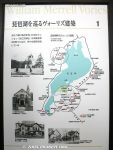
William Merrell Vories architecture map of Shiga.Sep 09, 2016
|
|

About the remains of the Kaga Clan's magistrate's office.Sep 09, 2016
|
|

Water liliesSep 09, 2016
|
|

Sep 09, 2016
|
|

Water lilies from the Niigata home of Chiaki Yoshida who composed the melody of Lake Biwa Rowing Song. From the original plant that Chiaki planted.Sep 09, 2016
|
|

Souvenirs also sold in the museum.Sep 09, 2016
|
|

Comments about the song are welcome.Sep 09, 2016
|
|

Records of the song by various artists including Tokiko Kato.Sep 09, 2016
|
|

Sep 09, 2016
|
|

Sep 09, 2016
|
|

Exhibit about Yoshida Chiaki who composed the original melody.Sep 09, 2016
|
|

Sep 09, 2016
|
|

Exhibit about Oguchi Taro who created the song.Sep 09, 2016
|
|

Sep 09, 2016
|
|

Song museum's listening station where you can listen to many cover versions of the Lake Biwa Rowing Song recorded by Japanese singers and groups.Sep 09, 2016
|
|

Pictures of Lake Biwa Rowing Song monuments in Shiga. One for each of the six verses in the respective locations mentioned in the song.Sep 09, 2016
|
|

Another boat mate matched Oguchi's lyrics to the melody based on the old song called Water Lilies as modified by a young Chiaki Yoshida.It soon became a popular dormitory song. The song became a national hit in 1971 when singer Tokiko Kato recorded it. Numerous famous Japanese singers and groups have since released cover versions of the song. The town of Imazu even holds an annual song contest in June when choir groups from around Japan sing the song in a competition. The town even has this museum dedicated to the song.Sep 09, 2016
|
|

Inside the old song museum.The song is about the boys rowing around Lake Biwa while mentioning famous places like Otsu (the starting point), Omi-Maiko (Omatsu), Imazu, Chikubushima, Nagahama, and Chomeiji.
Sep 09, 2016
|
|

Imazu Port in spring.Sep 09, 2016
|
|

The old Biwako Shuko no Uta Shiryokan (Lake Biwa Rowing Song Museum), dedicated to the Lake Biwa Rowing Song, Shiga's most famous song. 琵琶湖周航の歌資料館 MAPThis old museum closed in March 2020, and moved to the Imazu-Higashi Community Center on April 1, 2020. Museum photos on this page show the old museum.
Photos of the new museum is here: https://shiga-ken.com/blog/2022/01/lake-biwa-rowing-song-museum/
In June 1917, a song called Biwako Shuko no Uta (Lake Biwa Rowing Song) was composed by college student Taro Oguchi during a boat rowing trip around Lake Biwa. He was a member of the rowing club at Dai-san High School (now Kyoto University). He composed it in Imazu, Shiga Prefecture during the second night of the trip.Sep 09, 2016
|
|

JR Omi-Imazu Station turnstileSep 09, 2016
|
|

JR Omi-Imazu Station's tourist information booth where you can pick up pamphlets and rent a bicycle.Sep 09, 2016
|
|

JR Omi-Imazu Station platformSep 09, 2016
|
|

JR Omi-Imazu StationSep 09, 2016
|
|

JR Omi-Imazu Station in spring with colorful azaleas.Sep 09, 2016
|
|

JR Omi-Imazu Station on the JR Kosei Line is Imazu's train station. Most major attractions in Imazu are within walking distance. Imazu Port is only a few minutes on foot. There are also rental bicycles and local buses.Sep 09, 2016
|
|

There's also a line from Biwako Shuko no Uta (Lake Biwa Rowing Song). My kind of bus.Apr 15, 2014
|
|

If you look closely, you can things that Imazu is famous for, like zazenso Eastern Skunk Cabbage flowers. Apr 15, 2014
|
|
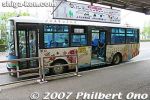
Bus at Omi-Imazu Station with localized design.Apr 15, 2014
|
|

My video of Imazu Junior High School Rowing Club on Lake Biwa.Apr 05, 2011
|
|

My YouTube video of the Shichikawa Matsuri in 2010.Jun 06, 2010
|
|

My YouTube video of the Omizo Matsuri in 2010.Jun 06, 2010
|
|

Omi-Takashima StationJun 01, 2010
|
|

Gulliver statue on the Omi-Takashima Station train platform.Jun 01, 2010
|
|

Tapestry on the back of Minato float.Jun 01, 2010
|
|

They tossed mochi after this in the shrine, but I left early to see the Shichikawa Festival in Shin-Asahi. Sorry, no photos of what happened here after this.Jun 01, 2010
|
|

Jun 01, 2010
|
|

Jun 01, 2010
|
|

Sculpture on Minato hikiyama float.Jun 01, 2010
|
|

Minato hikiyama float (湊)Jun 01, 2010
|
|

Jun 01, 2010
|
|

Tapestry on Tomoe hikiyama float (巴).Jun 01, 2010
|
|

Takara hikiyama float (寳). The roof ornament is very large.Jun 01, 2010
|
|

Tomoe hikiyama float (巴)Jun 01, 2010
|
|

Tapestry on the back of Takara hikiyama float.Jun 01, 2010
|
|

Jun 01, 2010
|
|

Jun 01, 2010
|
|

Jun 01, 2010
|
|

Tapestry behind the Isamu hikiyama float.Jun 01, 2010
|
|

They didn't have any signs indicating the name of the float. Isamu hikiyama float (勇).Jun 01, 2010
|
|

Each float has a tapestry on the back. This is the Ryu hikiyama float.Jun 01, 2010
|
|

I then took some pictures of each hikiyama. This is the Ryu (dragon) hikiyama float (龍).Jun 01, 2010
|
|

Jun 01, 2010
|
|

The shrine priest blesses each hikiyama.Jun 01, 2010
|
|

Finally the last hikiyama is parked along side the others.Jun 01, 2010
|
|

Jun 01, 2010
|
|

Jun 01, 2010
|
|

Jun 01, 2010
|
|

Jun 01, 2010
|
|

Jun 01, 2010
|
|

Jun 01, 2010
|
|

Jun 01, 2010
|
|

Jun 01, 2010
|
|

Jun 01, 2010
|
|

Jun 01, 2010
|
|

Turning the float at Omizo Matsuri.Jun 01, 2010
|
|

Jun 01, 2010
|
|

Jun 01, 2010
|
|

Jun 01, 2010
|
|

Jun 01, 2010
|
|

Jun 01, 2010
|
|

Jun 01, 2010
|
|

All the Omizo Matsuri hikiyama arrived in succession as they ran each time. Also see my video at YouTube.Jun 01, 2010
|
|

They ran while pulling the float into the shrine grounds.Jun 01, 2010
|
|

Then they turned the float and parked it.Jun 01, 2010
|
|

The floats started arriving at Hiyoshi Jinja by 10:30 am. Jun 01, 2010
|
|

Torii at Hiyoshi Jinja Shrine. 日吉神社Jun 01, 2010
|
|
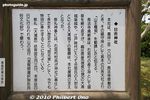
About Hiyoshi Jinja Shrine in Japanese.Jun 01, 2010
|
|

Steps to the shrine's hall.Jun 01, 2010
|
|

Hiyoshi Jinja Shrine. MAPJun 01, 2010
|
|

Jun 01, 2010
|
|

Jun 01, 2010
|
|

Float pullers definitely look better with happi coats.Jun 01, 2010
|
|

Passing by the elementary school. The stone marker indicates the way to Hiyoshi Jinja.Jun 01, 2010
|
|

The wheels are pretty small compared to other floats in Shiga.Jun 01, 2010
|
|

Jun 01, 2010
|
|

Jun 01, 2010
|
|

Jun 01, 2010
|
|

Jun 01, 2010
|
|

Jun 01, 2010
|
|

Jun 01, 2010
|
|

Jun 01, 2010
|
|

At the Omizo Matsuri in Shiga, I couldn't get used to the people in casual clothes pulling a traditional float. Maybe they can't afford to buy happi coats for all these people.Jun 01, 2010
|
|

Jun 01, 2010
|
|

Jun 01, 2010
|
|

Jun 01, 2010
|
|

Jun 01, 2010
|
|

Every year, they take turns being the first float (called Hanayama 花山) in the procession.Jun 01, 2010
|
|

Like the night before, local volunteer guides at Omi-Takashima Station gave directions and maps of the procession route. Very helpful even though there weren't too many tourists.Jun 01, 2010
|
|

On the next morning on May 4, 2010, a nice sunny day greeted the floats. The five floats started rolling at 10 am and headed slowly for Hiyoshi Jinja Shrine.Jun 01, 2010
|
|

Omizo Matsuri posterJun 01, 2010
|
|

Lanterns inside Omi-Takashima Station.Jun 01, 2010
|
|

Omizo Matsuri float passing by Omi-Takashima Station.Jun 01, 2010
|
|

Omizo Matsuri float passing by Omi-Takashima Station.Jun 01, 2010
|
|

Then the floats passed by Omi-Takashima Station which has a giant Gulliver statue.Jun 01, 2010
|
|

Omizo Matsuri float passing by Omi-Takashima Station.Jun 01, 2010
|
|

The floats have festival musicians who play the taiko drum, bell, and flute.Jun 01, 2010
|
|

Pulling the Ryu (龍) hikiyama.Jun 01, 2010
|
|

At around 7:30 pm, they all gathered here near the hospital and took a break. 分部神社前Jun 01, 2010
|
|

Jun 01, 2010
|
|

Jun 01, 2010
|
|

The Takara and Tomoe floats pass by each other during the Omizo Matsuri.Jun 01, 2010
|
|

Jun 01, 2010
|
|

They made a U-turn at the Otabisho near the lake shore.Jun 01, 2010
|
|

There were so many spectators so it was easy to move around and shoot.Jun 01, 2010
|
|

The Omizo Matsuri is a Shiga Prefecture Intangible Folk Cultural Property.Jun 01, 2010
|
|

I followed them to the lake shore as the sky got darker.Jun 01, 2010
|
|

Some people wore happi coats, but many people didn't. So it didn't look as traditional as other float festivals.Jun 01, 2010
|
|

The paper lanterns is emblazoned with the name of the float. Each name has only one kanji character. This is the Isamu (勇) hikiyama float.Jun 01, 2010
|
|

The hikiyama float's wheels cannot turn, so they turn the float by tilting it and turning it by force. This is the Tomoe (巴) hikiyama float. Jun 01, 2010
|
|

The floats are pretty small, compared to other float festivals in Shiga. So they are light enough to tilt when they need to turn. This is the Takara (宝) float.Jun 01, 2010
|
|

May 3 is the Yoimiya or festival eve when they parade the five ornate hikiyama floats in the evening from 6:45 pm. They first gather in front of Ebisu-so, near Omi-Takashima Station. This is the Minato (湊) float.Jun 01, 2010
|
|

The Omizo Matsuri is the biggest festival (Reisai) of Hiyoshi Jinja Shrine in Takashima (not to be confused with Hiyoshi Taisha in Otsu which is related) held annually on May 3-4.Jun 01, 2010
|
|

The floats are decorated with paper lanterns lit up. They return to Ebisu-so by 10:30 pm. When I went on May 3, 2010, there were local volunteer guides at the train station distributing maps of the parade route and giving directions. Very helpful.Jun 01, 2010
|
|

Jun 01, 2010
|
|

At the end of the baba, they turned around, and I left the scene.Jun 01, 2010
|
|

Jun 01, 2010
|
|

They paraded the mikoshi down the horse track (baba).Jun 01, 2010
|
|
|
|

Jun 01, 2010
|
|

The mikoshi was hauled on a cart.Jun 01, 2010
|
|

A short mikoshi procession led by the shrine priest.Jun 01, 2010
|
|

A short prayer by the shrine priest.Jun 01, 2010
|
|

Putting on the phoenix ornament atop the mikoshi.Jun 01, 2010
|
|

Jun 01, 2010
|
|

Jun 01, 2010
|
|

And went to carry the mikoshi inside the Haiden Hall.Jun 01, 2010
|
|

The yakko-furi approach the steps to the shrine.Jun 01, 2010
|
|

Then they ran up the steps.Jun 01, 2010
|
|

Jun 01, 2010
|
|

Jun 01, 2010
|
|

Jun 01, 2010
|
|

They made their way up to the shrine.Jun 01, 2010
|
|

After the yabusame, the yakko-furi boys performed without the targets. This was around 3:40 pm.Jun 01, 2010
|
|

Jun 01, 2010
|
|

Jun 01, 2010
|
|

Jun 01, 2010
|
|

Jun 01, 2010
|
|

Jun 01, 2010
|
|

Jun 01, 2010
|
|

Jun 01, 2010
|
|

Then the remaining horses ran a few times as well, three times each.Jun 01, 2010
|
|

The horseback archer on his third run. He spread his arms while holding a bow and arrow, but did not shoot any arrows. Jun 01, 2010
|
|

Jun 01, 2010
|
|

Jun 01, 2010
|
|

Jun 01, 2010
|
|

The horseback archer on his second run. He did not shoot any arrows. Jun 01, 2010
|
|

The boys running. When you see them, you know the horse is coming so keep off the path.Jun 01, 2010
|
|

After his first run, the horseback archer trots back.Jun 01, 2010
|
|

And they run again ahead of the horse.Jun 01, 2010
|
|

The horseback archer did not shoot any arrows. (It takes a lot of skill to do it.)Jun 01, 2010
|
|

The boys walk back again.Jun 01, 2010
|
|

They were soon followed by a horse galloping at full speed.Jun 01, 2010
|
|

Jun 01, 2010
|
|

At about 2:40 pm, the yabusame horseback archery began with the yakko-furi boys running down the path.Jun 01, 2010
|
|

The banner reads, "Oarahiko Jinja."Jun 01, 2010
|
|

Jun 01, 2010
|
|

Jun 01, 2010
|
|

The musicians and umbrella holders go back down from the shrine.Jun 01, 2010
|
|

They pay their respects to the shrine.Jun 01, 2010
|
|

Eight horses waiting.Jun 01, 2010
|
|

Jun 01, 2010
|
|
| 995 files on 4 page(s) |
1 |
 |
|